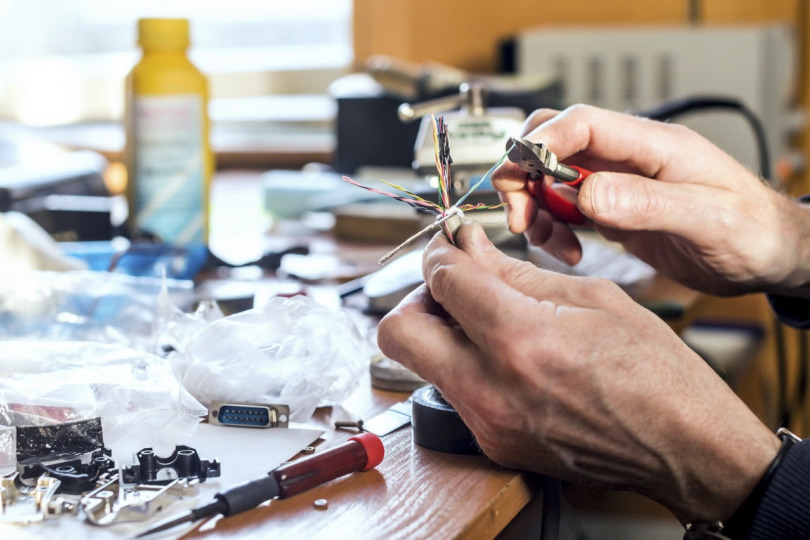Russian User-Innovators: What and Why
Many Russians practice user innovation by developing their own inventions for use in everyday life, recreation, sports, etc. According to a study by Fursov and Turner conducted as part of the HSE ISSEK Monitoring Survey of Innovative Behaviour of the Population, the estimated share of user-innovators in Russia may be as much as 10%, which is substantially higher than in many other countries.

Many Russian user-innovators surveyed are unfamiliar with the term 'innovation', willing to share their ideas and inventions, but rarely, compared to people in western countries, seeking to protect their innovations through intellectual property rights or pursue commercial opportunities. The study findings are published in the paper God Helps Those Who Help Themselves! A Study of User-Innovation in Russia. The study uses a sample of 1,670 home interviews conducted in different Russian regions.
Unrestricted by Age
Fursov and Turner examined the situation with user innovation in Russia and found a surprising 9.6% of user-innovators, which is higher than observed in earlier studies in other countries, where the estimated share of user-innovators varied between 3% and 6% of the population, e.g. 3.7% in Japan, 5.2% in the U.S., 6.1% in the U.K., 5.4% in Finland, and 1.5% in South Korea.
User innovations are those initiated by users of goods or services rather than manufacturers or providers. User motivations can vary from innovating just for fun to seeking to learn new skills or advancing once's career. Their innovations can include both completely new creations and modified versions of existing products.
Types of User Innovations in Russia
Automatic feeders for dogs and other pets
DIY home video surveillance systems
Home power generators
‘Tweaking’ household appliances or sporting equipment
Computer innovations
Housekeeping items
Gardening items
The types of user innovations in Russia can vary from sophisticated IT-related inventions to housekeeping or recreation items, including automated pet feeders, DIY home surveillance systems, home power generators, and various ‘tweaks’ to improve household appliances or sporting equipment.
Having studied the socio-demographic profile of Russian user-innovators, the researchers found their age range to be quite broad, mainly between 16 and 72. The age group of 25 to 34 was the most innovative, but the age distribution between the youngest and the oldest user-innovators was fairly well balanced.
More than half of Russian user-innovators live in small towns with less than 100,000 inhabitants (35.6%) and villages (23.8%), while Moscow is home to less than 10% of user-innovators. Consistent with findings from earlier research, young educated men with steady jobs are more likely than others to engage in user innovation. Generally, men are more interested in areas of innovation such as computers, IT and housekeeping, while women are more likely to innovate around arts, craft or gardening.
The researchers found that the biggest group of user innovators (40.3%) enjoyed an upper-secondary (regular school) or post-secondary (technical school or college) education, followed by individuals with higher education (24.5%) and lower secondary education (11.9%).
User-Innovators Need Support
Russians who create and use innovation are often unfamiliar with the term: one-third of respondents (32.5%) had never heard of the word before, and over a quarter, while familiar with the meaning, hardly use the term. As confirmed by the survey data, Russians rarely seek to patent their innovations. Nonetheless, Russian user-innovators are often quite willing to share their unpatented inventions, which can be explained, among other things, by their motivation to innovate.
The researchers identified two different groups of user-innovators. The first group includes urban, male, well educated, and more financially comfortable individuals who innovate for career reasons or for fun. The second group, which has not been described in similar studies conducted in other countries, includes people in small towns and villages who often innovate out of necessity to meet financial or consumer needs in the context of limited professional development opportunities. Generally, Russian user-innovators are rarely driven by motives such as career advancement or desire to produce a new commercial product.
The study's findings suggest that Russia has a good basis for the further development of user innovation, historically rooted in Soviet times, when user innovation was promoted, e.g. through popular journals like ‘Do It Yourself’, ‘Young Technician’ and ‘Science and Life’, which are being replaced today by social networks, video blogs and online forums. However, the high percentage of household innovators in Russia may also be a consequence of low purchasing power, an underdeveloped market or a poor supply of quality goods, according to Fursov.
Sourse: IQ.hse.ru
